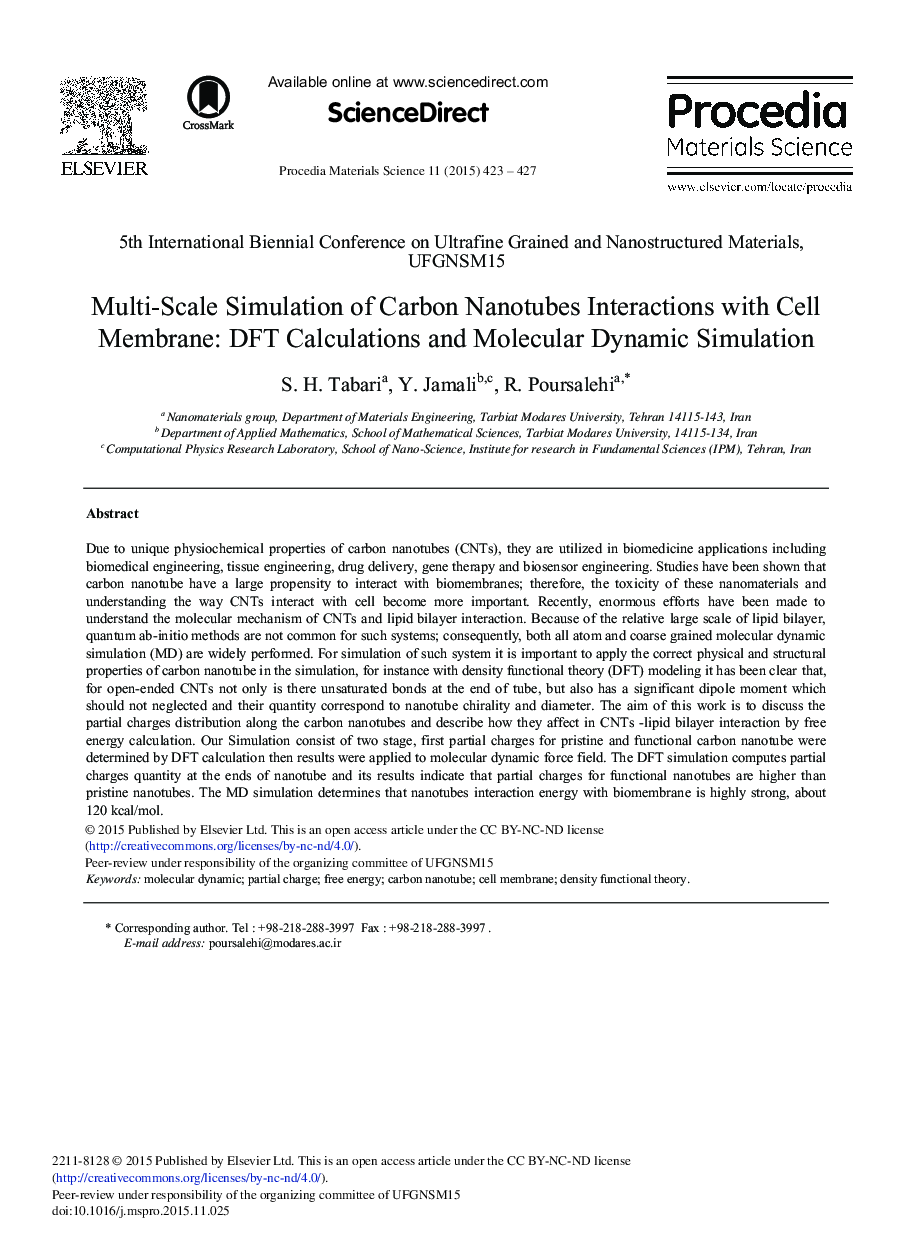| کد مقاله | کد نشریه | سال انتشار | مقاله انگلیسی | نسخه تمام متن |
|---|---|---|---|---|
| 1634087 | 1516774 | 2015 | 5 صفحه PDF | دانلود رایگان |

Due to unique physiochemical properties of carbon nanotubes (CNTs), they are utilized in biomedicine applications including biomedical engineering, tissue engineering, drug delivery, gene therapy and biosensor engineering. Studies have been shown that carbon nanotube have a large propensity to interact with biomembranes; therefore, the toxicity of these nanomaterials and understanding the way CNTs interact with cell become more important. Recently, enormous efforts have been made to understand the molecular mechanism of CNTs and lipid bilayer interaction. Because of the relative large scale of lipid bilayer, quantum ab-initio methods are not common for such systems; consequently, both all atom and coarse grained molecular dynamic simulation (MD) are widely performed. For simulation of such system it is important to apply the correct physical and structural properties of carbon nanotube in the simulation, for instance with density functional theory (DFT) modeling it has been clear that, for open-ended CNTs not only is there unsaturated bonds at the end of tube, but also has a significant dipole moment which should not neglected and their quantity correspond to nanotube chirality and diameter. The aim of this work is to discuss the partial charges distribution along the carbon nanotubes and describe how they affect in CNTs -lipid bilayer interaction by free energy calculation. Our Simulation consist of two stage, first partial charges for pristine and functional carbon nanotube were determined by DFT calculation then results were applied to molecular dynamic force field. The DFT simulation computes partial charges quantity at the ends of nanotube and its results indicate that partial charges for functional nanotubes are higher than pristine nanotubes. The MD simulation determines that nanotubes interaction energy with biomembrane is highly strong, about 120 kcal/mol.
Journal: Procedia Materials Science - Volume 11, 2015, Pages 423-427